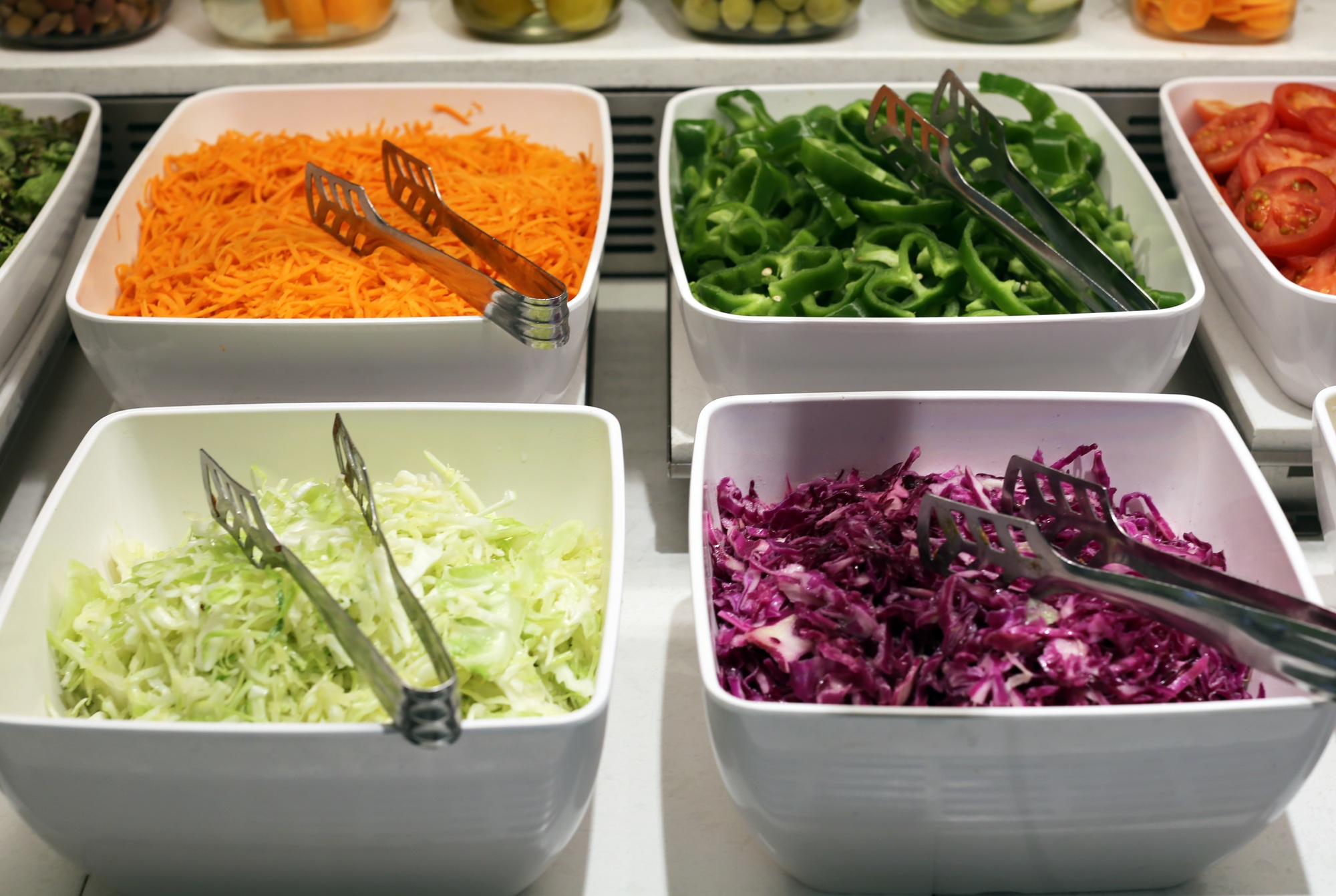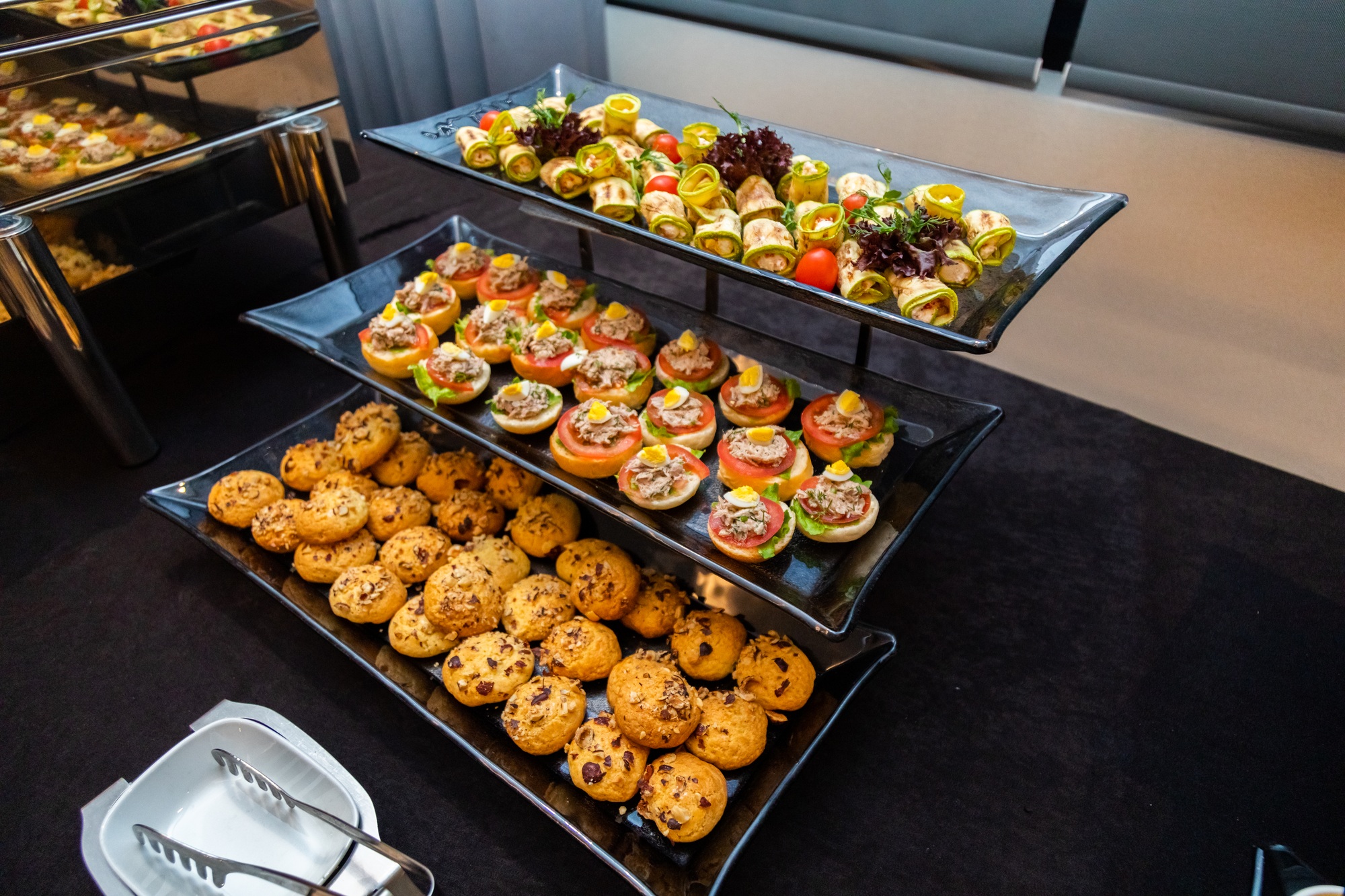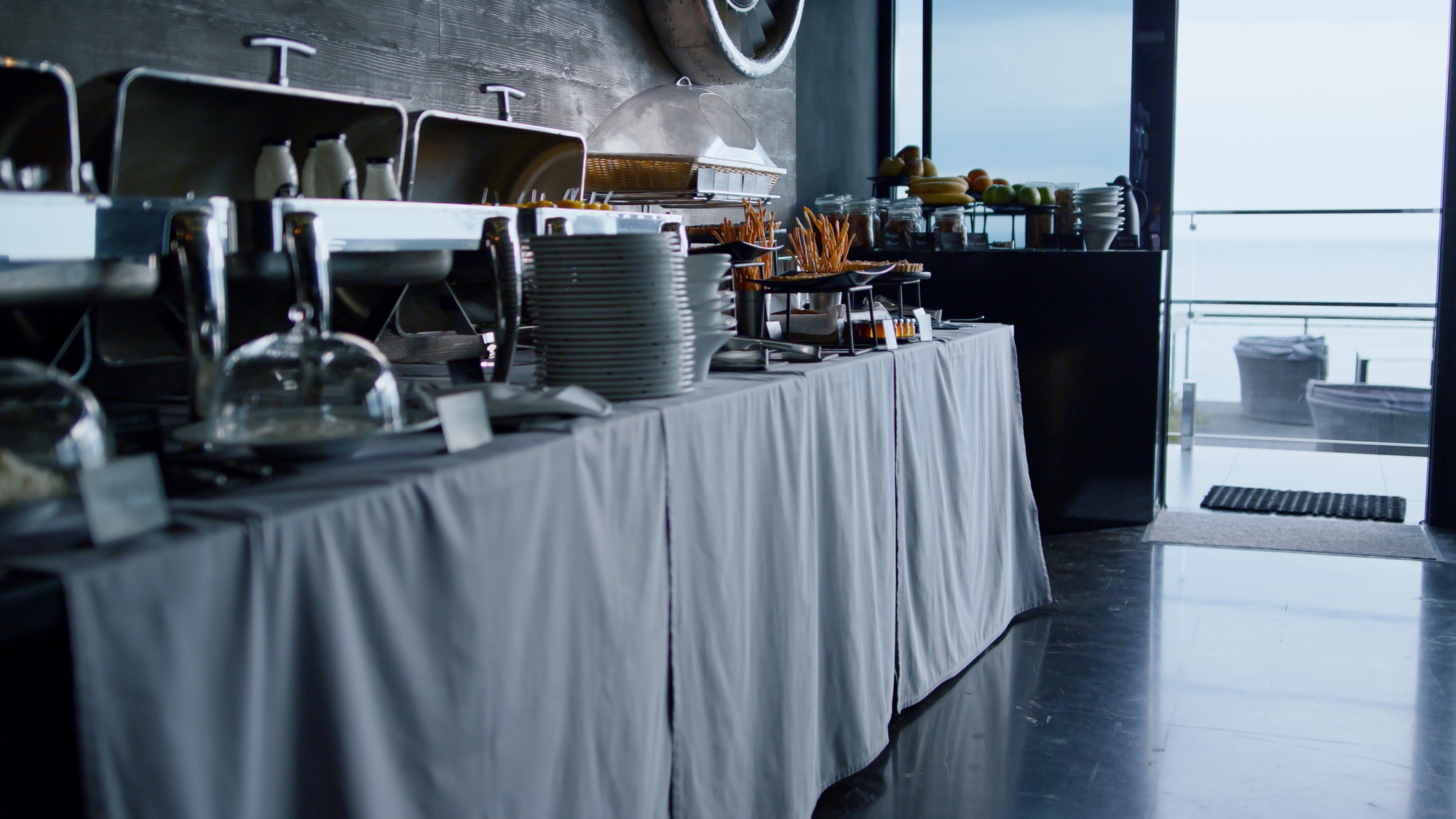Key Takeaways

- Create a Comprehensive Business Plan: Outline your vision, target market, services, pricing strategy, and financial projections to establish a strong foundation for your catering venture.
- Obtain Required Licenses and Permits: Research and secure all necessary legal documentation and health permits to operate your catering business in compliance with local regulations.
- Design a Diverse Menu: Curate a menu that showcases your culinary skills while accommodating various dietary preferences to attract a wider audience.
- Invest in Proper Kitchen Setup: Equip your kitchen with commercial-grade appliances and ensure compliance with health and safety standards for efficient operations.
- Implement Effective Marketing Strategies: Build an online presence, utilize social media, and network with local event planners to promote your catering services and expand your client base.
- Solicit Customer Feedback: Collect feedback from clients to refine your services, improve customer satisfaction, and encourage repeat business through positive word-of-mouth referrals.
Starting a catering business can be an exciting venture that combines your passion for food with the thrill of entrepreneurship. Whether you’re a seasoned chef or a home cook with a knack for delicious dishes, this journey offers endless possibilities. With the right planning and execution, you can turn your culinary skills into a thriving business that brings joy to others.
In today’s fast-paced world, people are always on the lookout for unique dining experiences. From weddings to corporate events, the demand for catering services is higher than ever. If you’re ready to dive in, understanding the essential steps to launch your catering business will set you up for success. Let’s explore how you can transform your love for cooking into a profitable enterprise that satisfies appetites and creates memorable moments.
How to Start a Catering Business

Starting a catering business involves several clear steps. Follow these steps to establish your small business successfully.
- Create a Business Plan
Develop a detailed business plan that outlines your vision. Your plan should include the services you offer, target market, pricing strategy, and financial projections.
- Obtain Necessary Licenses
Research and acquire the necessary licenses and permits for your catering business. Consult local health departments to ensure compliance with food safety regulations.
- Design Your Menu
Curate a diverse menu that showcases your culinary skills. Include options for various dietary preferences to attract a wider audience.
- Set Up Your Kitchen
Equip your kitchen with the essential tools and appliances needed for your catering operations. Make sure your workspace complies with health and safety standards.
- Establish Supplier Relationships
Build relationships with reliable suppliers for fresh ingredients. Quality ingredients contribute significantly to the success of your dishes.
- Market Your Services
Create a marketing strategy that incorporates online and offline tactics. Use social media platforms and local advertising to reach potential clients.
- Network and Build Connections
Attend local events and connect with individuals in the industry. Networking enhances your business visibility and can lead to referrals.
- Monitor Your Financials
Keep track of your income and expenses to maintain profitability. Utilize accounting software for accurate financial management.
- Seek Customer Feedback
Collect feedback from clients to improve services. Satisfied customers can lead to repeat business and positive word-of-mouth referrals.
- Adjust and Scale Your Business
Evaluate your progression regularly. Make adjustments where necessary and consider expanding your services as demand grows.
By following these steps, your journey in the catering business can transform your passion for food into a thriving enterprise.
Step 1: Create a Business Plan

Creating a business plan serves as a foundational step when starting a catering business. A well-structured plan outlines your strategic approach and positions you for success.
Define Your Catering Niche
Defining your catering niche clarifies your target market and services. Identify specific areas within the catering industry where you excel, such as corporate events, weddings, or themed parties. Focusing on a niche helps distinguish you from competitors and attracts customers seeking specialized services. Research current trends and customer preferences in the catering industry, as this informs your offerings and enhances your competitive edge.
Outline Your Business Goals
Outlining your business goals provides direction and measurable benchmarks. Establish both short-term objectives and long-term aspirations. For instance, set a goal to secure three corporate contracts within your first year while aiming for a 20% increase in revenue compared to the previous year. These goals support your overall vision and guide daily operations, ensuring that you maintain a strategic approach as you grow your small business.
Calculate Startup Costs
Calculating startup costs is essential for financial planning. Compile all potential expenses, including kitchen equipment, supplies, marketing expenses, licenses, and permits. Consider startup costs such as renting a commercial kitchen or purchasing catering vehicles if necessary. Create a detailed budget that encompasses initial investments and ongoing operational costs. A clear financial plan ensures you allocate funds effectively, allowing for stability as you launch your catering business.
Step 2: Register Your Business

Registering your business is a vital step in launching a successful catering venture. This process involves choosing a suitable business structure, securing necessary licenses and permits, and registering for taxes.
Choose a Business Structure
Select a business structure to define your liability and tax obligations. Common options include:
- Sole Proprietorship: This simplest form allows personal ownership. However, personal liability for damages or injuries applies.
- Limited Liability Company (LLC): This structure provides personal liability protection and flexible taxation options. Establishing an LLC requires more time and financial investment compared to a sole proprietorship.
- Partnerships: Ideal for business owners with associates, partnerships distribute liability and profits among partners. Consider general, limited, and limited liability partnerships based on your needs.
Obtain Necessary Licenses and Permits
Acquire the required licenses and permits to operate legally. Research specific regulations in your area related to health and safety standards. Examples may include food handler permits and business licenses that are mandatory for catering operations.
Register for Taxes
Register for taxes in your jurisdiction to ensure compliance with tax regulations. Obtain an Employer Identification Number (EIN) from the IRS if planning to hire employees. Understand the state and local tax requirements specific to small businesses, such as sales tax for catered services and income tax obligations.
Step 3: Develop Your Menu

Developing a menu represents a critical step in starting your catering business. Your menu must appeal to your target audience while ensuring profitable pricing.
Consider Customer Preferences
You should prioritize customer preferences when designing your menu. Focus on these essential points:
- Adaptability: Craft a menu adaptable to types of events and customer preferences. Include diverse options, such as appetizers, main courses, sides, and desserts.
- Dietary Requirements: Provide options that cater to various dietary needs. Incorporate vegetarian, gluten-free, and vegan selections to ensure inclusivity for all guests.
- Event-Specific Menus: Design packages tailored to specific occasions. Offer unique menus for weddings, corporate functions, and private parties to enhance guest satisfaction.
Pricing Your Menu
You must consider strategic pricing to maintain competitiveness and profit margins. Implement these aspects:
- Cost Analysis: Calculate food costs for each dish, including ingredients and labor. This analysis ensures accurate pricing and desired profit margins.
- Market Research: Investigate competitors’ pricing to establish your rates. Competitive pricing attracts customers while ensuring adequate profit for your small business.
- Tiered Pricing: Develop tiered pricing for different menu options. Offer budget-friendly selections alongside premium choices to appeal to various client budgets.
Recipe Testing and Costing
You should conduct recipe testing to refine your menu offerings. Focus on these steps:
- Recipe Evaluation: Test and adjust recipes to ensure consistency and quality. Aim for flavor profiles that resonate with your target customers.
- Costing Exercises: Analyze the cost of each tested recipe to determine profitability. This step avoids underpricing while enhancing financial planning for your small business.
- Feedback Gathering: Solicit feedback from test tastings to identify favorites. Incorporating customer input helps hone a popular and appealing menu.
Step 4: Set Up Your Kitchen

Setting up your kitchen efficiently ensures your catering business operates smoothly and adheres to local regulations.
Home Kitchen vs. Commercial Kitchen
A home kitchen generally doesn’t qualify for commercial food preparation per regulations like the Michigan Cottage Food Law. Commercial kitchens must completely separate from residential areas and comply with stringent local health and safety standards. Commercial kitchens provide the necessary environment for larger-scale food production.
Equipment and Supplies Needed
Commercial-grade equipment is essential for your kitchen setup. Start with commercial appliances such as ovens, refrigerators, and stovetops that meet safety standards. Necessary supplies include chafing dishes, insulated food carriers, buffet tables, and serving utensils. Investing in reliable equipment supports efficient food service during events.
Health and Safety Considerations
Health and safety regulations significantly impact your kitchen setup. Maintain proper sanitation practices by ensuring accessible handwashing stations and maintaining food storage at safe temperatures. Regular inspections must occur to monitor compliance with local health codes, thereby protecting your business and customers. Familiarizing yourself with these regulations is crucial when learning how to run a successful small business in the catering industry.
Step 5: Market Your Catering Business

Marketing your catering business involves strategic actions to attract clients and build a strong customer base.
Build an Online Presence
- Create a Website: Develop a professional website that clearly presents your services, pricing, and menu options. Include high-quality images of your dishes and testimonials from clients to build trust and showcase your offerings.
- Social Media: Launch social media profiles on platforms like Instagram, Facebook, and LinkedIn. Use these to exhibit your catering talents, share updates, and engage with potential clients. Regularly post photos and videos of your events and dishes to draw attention and foster connections.
- SEO Strategies: Implement local SEO strategies to enhance your website’s visibility in search results. Optimize with relevant keywords and location-based phrases to attract local clientele who search for catering services.
Networking and Partnerships
- Join Local Groups: Participate in local business groups or industry associations to meet other professionals. Engage in programs like chamber of commerce networking events to broaden your reach.
- Collaborate with Event Planners: Establish relationships with event planners and venues. Offer referral incentives to motivate them to recommend your services, expanding your client base.
- Attend Community Events: Attend local fairs and festivals to enhance visibility. Use these events to showcase your dishes and engage with attendees, creating direct connections with potential clients.
Create Marketing Materials
- Design Business Cards: Create visually appealing business cards that summarize your services and contact information. Distribute them at events to maintain a professional image.
- Develop Brochures: Make informative brochures that highlight your catering options, pricing, and sample menus. Place these in local businesses and distribute them at community events.
- Use Online Ads: Invest in online advertising through Google Ads and social media platforms to target specific demographics and expand your reach. Focus on targeted keywords related to your catering services to attract the right clients.
Step 6: Launch Your Business

Launching your catering business marks an exciting phase. Focus on meticulous preparation and client engagement to ensure a memorable start.
Prepare for Your First Event
- Select a Venue: Identify the event location, considering capacity, accessibility, and facilities.
- Confirm Menu Details: Finalize menu selections based on client preferences and dietary needs to ensure satisfaction.
- Organize Staff: Assign roles and responsibilities to staff members, including chefs and servers, for streamlined operation during the event.
- Procure Supplies: Gather all necessary ingredients, equipment, and serving supplies to deliver exceptional service.
- Conduct a Pre-Event Meeting: Engage all team members in a pre-event discussion to align on expectations and troubleshoot potential issues.
Obtain Client Feedback
- Implement Feedback Tools: Use surveys or direct interviews to gather client insights after events, focusing on food quality and service efficiency.
- Analyze Responses: Assess feedback data to identify strengths and areas needing improvement, emphasizing customer preferences and expectations.
- Address Feedback Promptly: Communicate with clients about how their feedback influences your services, demonstrating commitment to quality.
- Encourage Reviews: Request clients to leave testimonials or reflect on their experience publicly, bolstering your credibility and attracting new clients.
Following these steps enhances your launch while laying the groundwork for long-term success in your small business.
Troubleshooting

Navigating challenges in a catering business requires quick resolution and effective communication. Here are some common issues and methods for managing difficult clients.
Common Issues in Catering
- Food Quality Problems: Ensure freshness and quality of all ingredients to meet customer expectations. Regular checks for ingredient integrity help avoid unappetizing dishes.
- Staffing Shortages: Maintain a reliable team for events. Develop a roster of backup staff to fill in during unforeseen absences and ensure smooth service.
- Supply Chain Disruptions: Establish relationships with multiple suppliers to mitigate the impact of shortages. Diversify sources for critical ingredients to maintain menu consistency.
- Logistical Challenges: Implement detailed event plans. Specify delivery times, setup requirements, and equipment needed to avoid last-minute confusion.
- Budget Overruns: Regularly track expenses against budget projections. Make adjustments to pricing or menu offerings to ensure financial sustainability within operational costs.
Advice for Managing Difficult Clients
- Listen Actively: Pay attention to client concerns to demonstrate that their feedback is valued. Understanding their issues fosters trust and encourages cooperative dialogue.
- Maintain Professionalism: Approach all interactions with a calm and respectful demeanor. Professionalism reinforces your commitment to service excellence during disputes.
- Offer Solutions: Instead of dwelling on problems, present options to resolve issues. Providing alternatives empowers clients while showcasing your adaptability as a small business.
- Set Clear Expectations: Communicate policies and procedures upfront to prevent misunderstandings. Clearly defined expectations minimize the likelihood of dissatisfaction during events.
- Request Feedback: Encourage clients to share their thoughts post-event. Actively seeking feedback shows commitment to improvement and helps identify areas for future enhancement.
Helpful Tips

Consider these essential tips to enhance your catering business’s foundation and ensure success.
Importance of Insurance
Insurance serves as a critical protector for your catering business. Obtain liability insurance to cover potential accidents or damages that may occur during events. Explore additional coverage options such as property insurance and workers’ compensation for comprehensive protection. Insurance safeguards your investment, ensuring peace of mind while operating your small business.
Setting Up a Backup Plan
Establishing a backup plan is vital for handling unexpected challenges. Create contingency strategies for various scenarios such as equipment failure, staff shortages, or supply chain disruptions. Prepare alternative menus to accommodate last-minute changes and secure relationships with back-up suppliers for essential ingredients. An effective backup plan ensures your small business can adapt swiftly and maintain service quality, even in unpredictable situations.
Conclusion

Starting a catering business is a rewarding journey that combines your love for food with entrepreneurial spirit. By following the outlined steps and strategies, you can build a solid foundation for success. Remember to stay adaptable and responsive to your clients’ needs while maintaining the quality of your offerings.
As you navigate the challenges of this industry, focus on building relationships and enhancing your skills. With dedication and creativity, you’ll create memorable experiences that keep clients coming back. Embrace the journey and watch your catering business flourish.
Frequently Asked Questions

What is the first step in starting a catering business?
The first step is to create a detailed business plan. This plan should include your vision, services, target market, pricing strategy, and financial projections. It sets the foundation for your catering venture and helps you stay focused on your goals.
How do I define my catering niche?
To define your catering niche, identify specific areas you excel in, such as corporate events, weddings, or themed parties. Focus on your strengths and market demands to distinguish yourself from competitors and attract your target audience.
What licenses do I need to start a catering business?
You’ll need to obtain necessary licenses and permits to operate legally. This typically includes a food service license, health permits, and possibly a business license, depending on your location. Research local regulations to ensure compliance.
How should I develop my menu?
When developing your menu, consider customer preferences, dietary needs, and event types. Conduct recipe testing, analyze costs, and price strategically to appeal to your target market while maintaining profitability.
What kitchen setup do I need for catering?
Your kitchen should meet health and safety regulations. Depending on your local laws, you may need a commercial kitchen. Invest in commercial-grade appliances and necessary supplies to ensure efficient operations during events.
How can I market my catering business?
To market your services, build an online presence with a professional website and social media profiles. Use SEO strategies, attend local events, network with event planners, and create marketing materials like business cards and brochures.
How should I handle customer feedback?
Collecting customer feedback is vital for improvement. Use feedback tools, analyze responses, and address any concerns promptly. Encourage reviews to enhance your credibility and ensure repeat business.
What are some common challenges in the catering business?
Common challenges include maintaining food quality, addressing staffing shortages, dealing with logistical issues, and controlling budgets. Being proactive, having contingency plans, and actively listening to clients can help in managing these challenges effectively.
Why is liability insurance important for a catering business?
Liability insurance protects your business from potential accidents or damages that may occur during events. It is essential for safeguarding your financial interests and building trust with clients.
How do I know when to scale my catering business?
Regularly assess your progress and market demand. If you notice consistent growth and an increase in requests, consider expanding your services or product offerings to meet new needs and enhance your business.
Image Via Envato: stockbusters, collab_media, dasha11, AlexVog, Prostock-studio, Pressmaster, valeriygoncharukphoto, Dream79, IrynaKhabliuk, YuriArcursPeopleimages, prathanchorruangsak, kaplickaya



